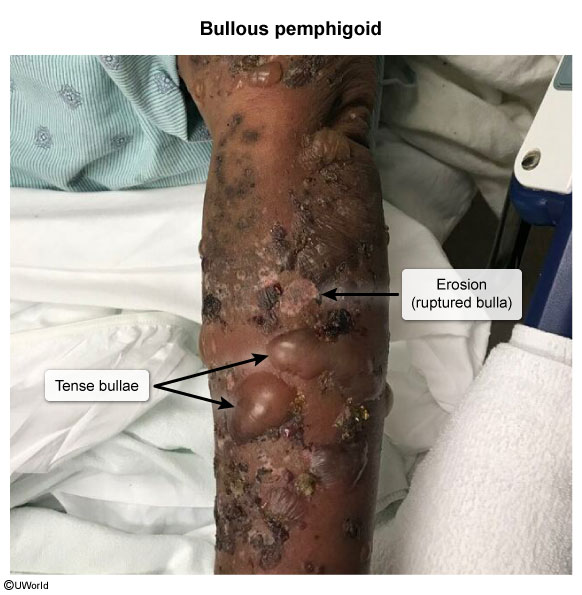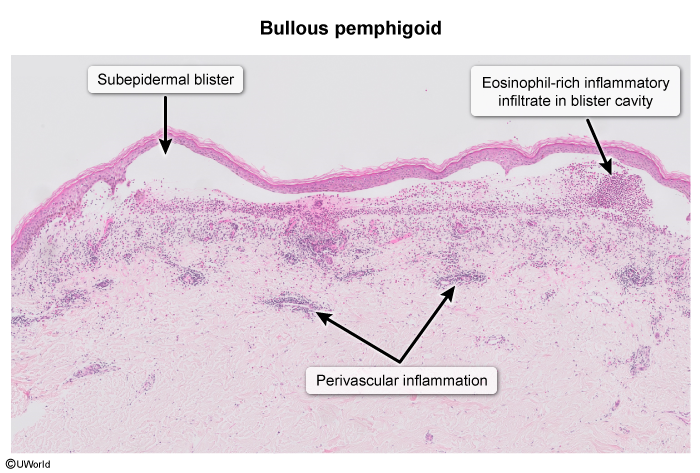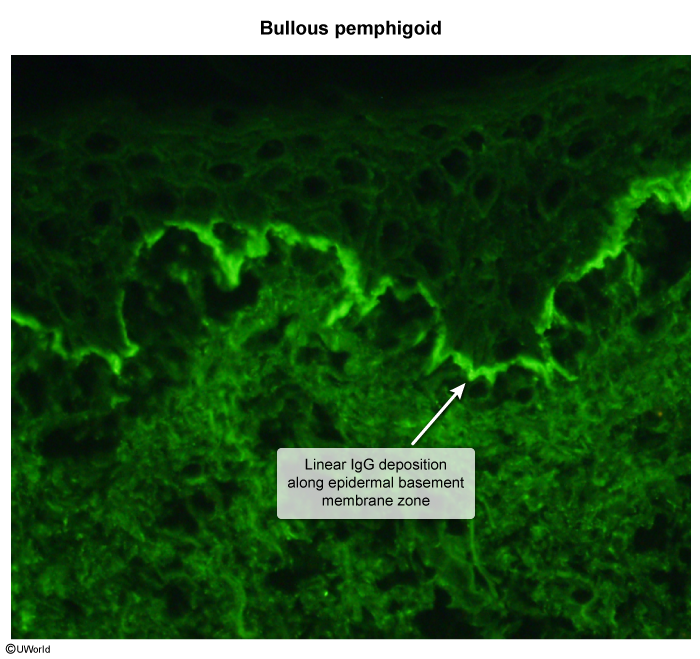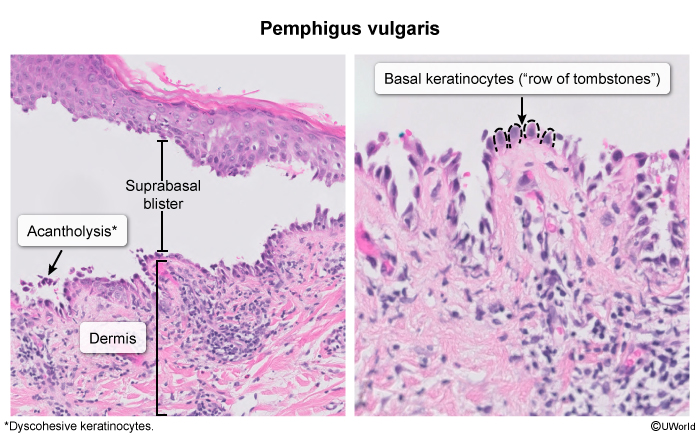Bullous Pemphigoid And Pemphigus Vulgaris
Article Sections
Introduction
Bullous pemphigoid (BP) and pemphigus vulgaris (PV) are autoimmune diseases characterized by decreased epidermal integrity. BP causes subepidermal blistering and tends to affect older adults, whereas PV involves intraepidermal blistering and affects a younger population.
Bullous pemphigoid
BP is caused by autoantibodies targeting the basement membrane zone of the epidermis, specifically BP180 (collagen XVII) and BP230, which are components of hemidesmosomes (Figure 1). This autoimmune reaction triggers a cascade of inflammation, leading to separation of the epidermis from the dermis. Because the overlying epidermis is relatively intact, BP results in tense subepidermal blisters.
Risk factors- Age: Age >60
- Medications: Furosemide, penicillamine, and certain antibiotics (eg, sulfonamides)
- Neurological conditions: Parkinson disease, multiple sclerosis
- Genetic predisposition: HLA-DQB1 has been associated with increased susceptibility
Continue Learning with UWorld
Get the full Bullous Pemphigoid And Pemphigus Vulgaris article plus rich visuals, real-world cases, and in-depth insights from medical experts, all available through the UWorld Medical Library.
Figures


Images



